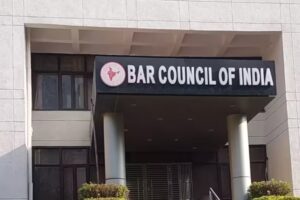
The Supreme Court has removed the restriction imposed on increasing air traffic in the Agra area.
In December 2019, while granting permission to the Airport Authority of India(AAI) to construct an additional terminal at the Agra airport, the Supreme Court had imposed a restriction that the air traffic should not be increased.
A bench comprised of Justice Sanjay Kishan Kaul, Justice Abhay S. Oka and Justice JB Pardiwala removed the restriction for additional flights, after allowing an application filed by the Airports Authority of India(AAI).
The decision was passed in the MC Mehta v. Union of India case, in which the court has issued numerous rulings pertaining to environmental issues all over the nation.
During the hearing, amicus curiae Senior Advocate ADN Rao informed the Court about the AAI’s application to modify the restriction that AAI would not add any additional flights in Taj Trapezium Zone Airport, i.e. the Agra Airport.
According to Rao, they ask for the modification of an earlier order. Prior to doing so, they had pledged not to add any more flights. Now they want that it be removed from the court’s orders.
Counsel representing AAI stated, “I have got all permission. This court has also allowed me to build an additional terminal. The state has permitted. Environment Clearance has been granted. I have invested so much. It is the need of the hour. We need it. The entire world comes there and they need it. We have to build an additional terminal. It is 10 kms away from the premises.”
The bench was inclined to issue orders that stated:
“It is submitted that the requisite studies have been undertaken by the AAI as well as the Indian Government and concurrence has been obtained both of the Union of India and the State Government. The AAI proposes to invest considerable funds in extension of the airport. It is thus, submitted that the prerequisites for grant of permission to increase the airport traffic we are satisfied and permission may be granted so that the project takes off. In view of the aforesaid while removing the interdict, it is made clear that all necessary permission including of the CEC shall be obtained for increasing the traffic.”
Learned Amicus pointed out that there is already a swarm of planes flying over the Taj Mahal and other monuments.
The Supreme Court also ordered the state of Uttar Pradesh to consider rehabilitating shopkeepers in the Taj Trapezium Zone.
The application is approved accordingly and the order stands modified to that extent.
What is Taj Trapezium Zone?
The Taj Trapezium Zone is a defined area of 10,400 sq km around the Taj Mahal formed to protect the monument from pollution and includes World Heritage Sites like the Taj Mahal, Agra Fort and Fatehpur Sikri. In response to a PIL filed by social activist lawyer M.C. Mehta attempting to protect the Taj Mahal from environmental pollution, the Supreme Court banned the use of coal and coke in enterprises located in the TTZ in December 1996.
After receiving a ‘No Objection Certificate’ from the Ministry of Environment, the Supreme Court last year lifted its earlier total ban on construction, industrial activities, and tree cutting in the Taj Trapezium Zone. This allowed for the operation of industrial units that do not spread pollution and adhere to the rules.




